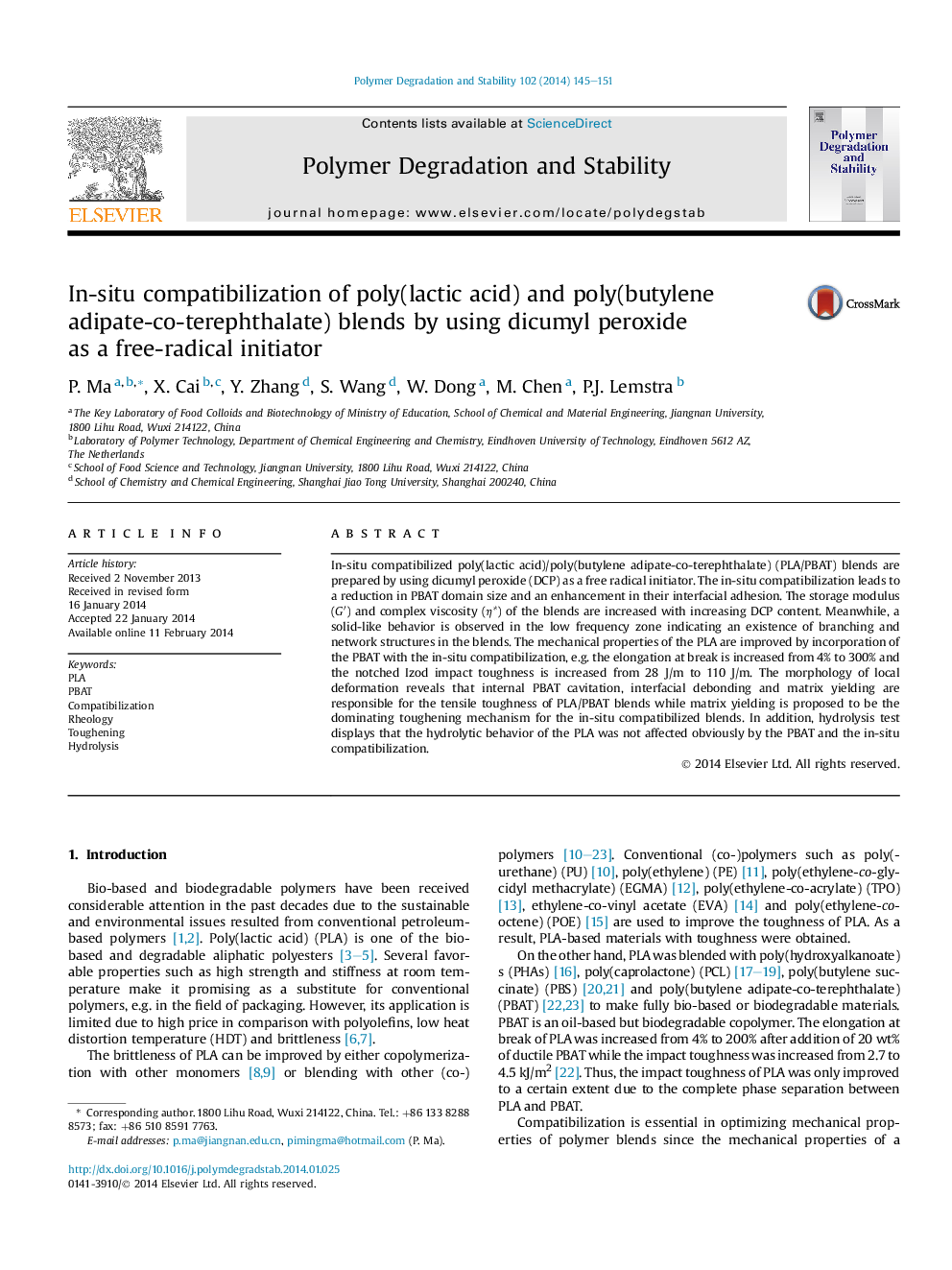| Article ID | Journal | Published Year | Pages | File Type |
|---|---|---|---|---|
| 5201975 | Polymer Degradation and Stability | 2014 | 7 Pages |
In-situ compatibilized poly(lactic acid)/poly(butylene adipate-co-terephthalate) (PLA/PBAT) blends are prepared by using dicumyl peroxide (DCP) as a free radical initiator. The in-situ compatibilization leads to a reduction in PBAT domain size and an enhancement in their interfacial adhesion. The storage modulus (Gâ²) and complex viscosity (η*) of the blends are increased with increasing DCP content. Meanwhile, a solid-like behavior is observed in the low frequency zone indicating an existence of branching and network structures in the blends. The mechanical properties of the PLA are improved by incorporation of the PBAT with the in-situ compatibilization, e.g. the elongation at break is increased from 4% to 300% and the notched Izod impact toughness is increased from 28 J/m to 110 J/m. The morphology of local deformation reveals that internal PBAT cavitation, interfacial debonding and matrix yielding are responsible for the tensile toughness of PLA/PBAT blends while matrix yielding is proposed to be the dominating toughening mechanism for the in-situ compatibilized blends. In addition, hydrolysis test displays that the hydrolytic behavior of the PLA was not affected obviously by the PBAT and the in-situ compatibilization.
